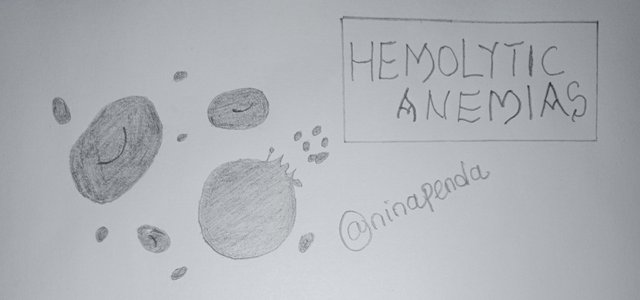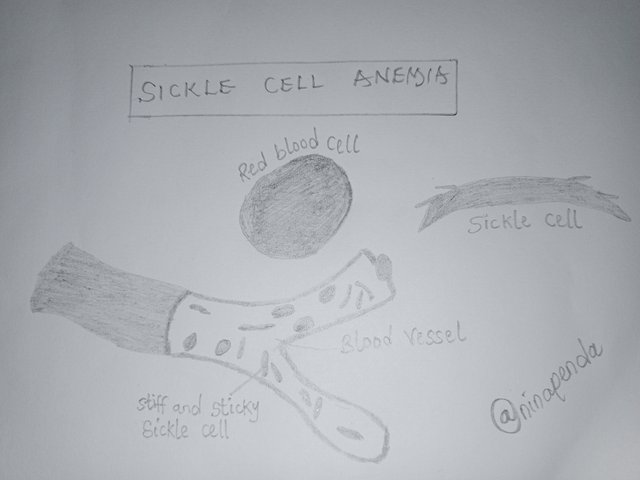SEC S20W5 || Hemolytic Anemias - Module 5

Define Hemolytic Anemias
Hemolytic anemias happen when red blood cells are destroyed too soon, before their normal lifespan. This is called hemolysis. It is also a condition characterized by the rapid destruction of red blood cells in the bloodstream, outpacing the body's ability to produce new ones in the bone marrow.
The destruction can be because of problems inside the red blood cells, like structural issues, or outside factors like infections or medications. This condition can be triggered by various factors, including autoimmune diseases, infections, adverse reactions to medications, or genetic disorders like sickle cell anemia.
Hemolytic anemia can come from your parents or developed later in life.
When your parents pass the gene for the condition on to you, this is inherited hemolytic anemia.
If the condition develops later in life and you're not born with it, that's acquired hemolytic anemia.
What causes hemolytic anemias (Inherited)
With the inherited type, parents give their children the genes for the condition. Sickle cell anemia and thalassemia are two common causes of this type of anemia. These conditions result in red blood cells that have a shorter lifespan than normal red blood cells.
(Acquired)
You don't have this type of anemia from birth. Your body produces regular red blood cells, but they get destroyed later.
Define Sickle Cell Anemia

Sickle cell anemia is the most serious form of sickle cell disease, a genetic blood disorder. In this condition, a genetic mutation causes red blood cells to become C-shaped or sickle-shaped. These cells, often referred to as “sickled cells,” are rigid and sticky, leading to blockages in blood vessels and a reduced supply of red blood cells. This results in severe anemia.
Normally, red blood cells are flexible and round, allowing them to carry oxygen throughout the body. However, sickled cells do not flow properly and break down faster than normal red blood cells. This condition used to significantly reduce life expectancy, but with early detection and improved treatments, more people now live into their 50s.
Sickle cell anemia develops when you get genetic mutations that affect the HBB gene. This gene source instructions on how to make beta-globin, which is part of your hemoglobin protein. Hemoglobin is in charge of helping the red blood cells access oxygen all over the body. You may have sickle cell anemia from both of your biological parents if you inherit one type of changed gene.
Intravascular hemolysis vs extravascular hemolysis

Intravascular hemolysis means that your blood cells are getting destroyed inside your blood vessels. This causes the broken cell parts to move around in your bloodstream.
Extravascular hemolysis means that your red blood cells are being destroyed outside of your blood vessels, like in your spleen. When your blood passes through your spleen, special white blood cells called macrophages find and get rid of old or damaged red blood cells.
Explain a case of Hemolytic Anemia
The little I know about my neighbor's case, a 25-year-old female who already had past medical history of sickle cell disease. She was taken to the hospital after few days of complaining of severe chest pain, shoulder pain, abdominal pain. Unfortunately she was admitted because she started experiencing high fevers with nausea.
She was treated for vaso-occlusive pain crisis but in the course of this treatment, her respiratory status declined. An intubation and a repeat of chest X-ray were carried out. She had to go through two exchange of 12 units packed red blood cells transfusions.
Despite her breathing getting better, the levels of lactate dehydrogenase (LDH) and bilirubin remained high, and haptoglobin was undetectable. Also, the count of nucleated red blood cells increased, while the reticulocyte count decreased, which made the doctors worried about hyperhemolysis syndrome. They stopped giving blood transfusions and started her on methylprednisolone 40 mg twice a day.
She continued this for about 7 to 15 days and finally, the patient's test results got better and she was able to leave the hospital in good shape.
This where I draw the curtain. Thank you friends for reading through. I invite @sahmie @eliany @pandora2010

Upvoted. Thank You for sending some of your rewards to @null. It will make Steem stronger.
Your information can be very helpful for those suffering from Hemolytic Anemia. An excellent post. Good luck for the contest.